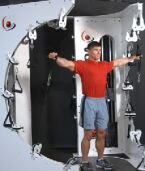Scoliosis

CLICK HERE FOR OUR SCOLIOSIS SCREENING PROGRAM BROCHURE
"Scoliosis is the most deforming orthopedic problem confronting children. It is a potentially progressive condition that affects children during their active growth phase and essentially subsides upon completion of spinal growth, leaving the child with a permanent deformity. Early recognition and early treatment can be effective in halting its progress and in many cases result in improvement." 1
"The most important factor in ensuring early diagnosis of scoliosis is to routinely examine all growing children at regular periods during growth. These periods should preferably be at six-month intervals from early childhood until full maturity with greater attention during the rapid growth phases that usually occur from ages 8 through 12. Early recognition and early treatment can be effective in halting its progress and in many cases result in improvement." 1 The goal of any screening program is to prevent severe spinal deformity and its consequences.

"The effects of scoliosis in the child and its persistence into adulthood are primarily cosmetic. However, pain can be significant even after therapy and severe scoliosis can result in cardiopulmonary complications that can decrease life span." 1
Scoliosis, a term used by Hipocrates, means abnormal curvature of the spine. When a scoliosis develops the spine bends sideways and rotates along its vertical axis. When looking at someone from behind, the spine curves either like a "C" or like an "S." The curve is named by the side of convexity, ie. if the curve looks like an "S," the top curve would be left and the bottom curve would be right. There are many theories as to the cause of scoliosis, but the true causative factor of most scoliosis curves remains unknown. The most common scoliosis is called adolescent idiopathic scoliosis. The word idiopathic means cause unknown. It is 8-10 times more common in girls than boys and accounts for 90% of the curves seen in clinical practice. Scoliosis can be caused by congenital deformities, neuromuscular diseases and paralysis, but these causes make up a small percentage of scoliotic curves.
A significant curve of more than 25 degrees is now estimated to be present in 1.4 per thousand of the population, with approximately 2 percent of the adult population demonstrating some degree of spinal curvature. According to the Scoliosis Research Society, about 10% of the adolescent population has some degree of scoliosis. This means that about 1,000,000 children just in the United States have scoliosis. About on fourth of these children, or 2%-3%, will require medical attention which may consist of observation for further progression of the curve, bracing or surgery, depending upon the degree of the curvature at the time of its detection. Some scoliosis may be so mild that treatment may never be necessary.
Early diagnosis depends on an awareness of its possibility with the hope that early diagnosis will ultimately reveal early minimal scoliosis and result in early referral for treatment."


The initial examination of the patient consists of observation from the back, front and side in the standing and bent forward position. A easy assessment can be made from the back as per the pictures above. Have the person bend forward from the waist and look for the "rib hump" caused by the bunching of the ribs together on the side of the curve. If a significant scoliotic curve is discovered, X-rays are taken of the involved area of the spine from the front and side. A measurement is taken to determine the severity of the curve. Both the degree and rapidity of progression of the curve determine the proper treatment of the patient.
A study in the January 1, 2004 journal Spine concluded that capping of the iliac apophysis (Risser sign) is not a reliable indicator of the end of spinal growth. The rib epiphysis and the proximal humerus growth centers should be considered as well as lack of standing height increases on two consecutive visits.
Contact us at 301-622-9000 for a proper and thorough scoliosis screening!
Maryland Law and Scoliosis Screening
"Code §7-405 requires each public school system in conjunction with the local health department to provide scoliosis screening tests for all students at least once in grades 6 through 8. Regulation 13A.05.05.07 Section A defines the age that school children must be screened and designates responsibility for screening to local school systems and health departments. Local health departments must conduct the screening in all nonpublic schools and fund the screening in all schools." Scoliosis Screening Requirements in Maryland
1 Scoliosis: Diagnosis and Management
by Rene Cailliet, MD
|
The Ultimate Nutritional Lie Detector Test LEARN MORE 
|
Kettlebell Rehab

Click Here
To See How Kettlebells will transform your body!
Vortex Rehab

Click Here
To See How This
Revolutionary Machine
Can Help You!
Partner / Support

Loans up to 3 months - fast cash advances for up to 90 days and up to $5,000!


















